You can access VR experiences despite visual limitations through multi-modal feedback systems that combine 3D spatial audio, haptic vibrations, and voice commands for independent navigation. These technologies provide real-time obstacle detection, proximity alerts, and directional cues to guide you through virtual environments. Current VR platforms are integrating customizable color schemes, contrast modes, and assistive technology compatibility to bridge accessibility gaps. Discover how emerging innovations and community-driven research are revolutionizing inclusive virtual reality experiences.
Current Challenges for Blind and Low Vision VR Users
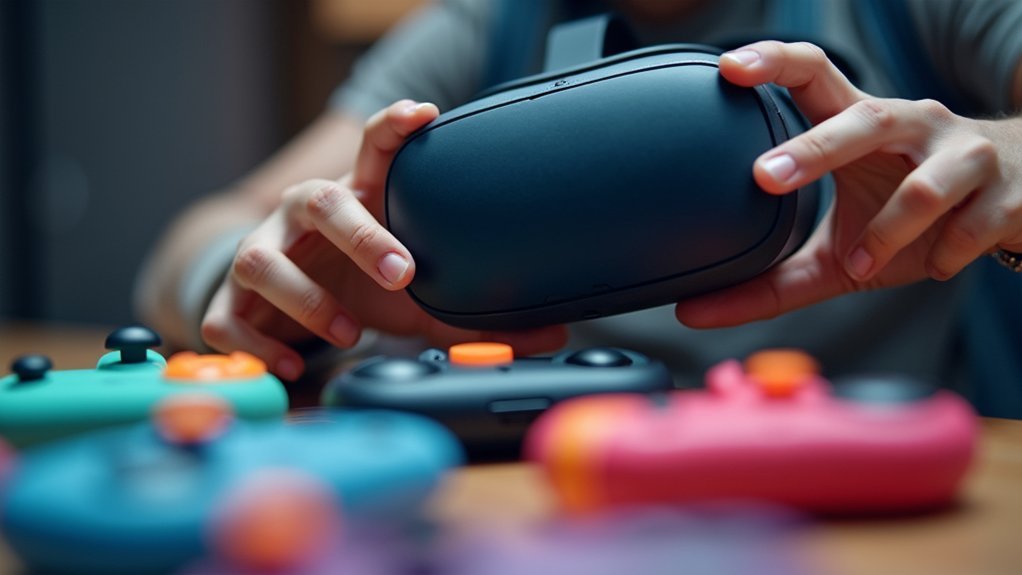
While virtual reality promises immersive experiences for all users, blind and low vision individuals face considerable barriers when trying to access VR technology.
You’ll encounter major obstacles with in-headset interfaces that lack screen reader compatibility and magnification features. Most VR platforms don’t provide standardized accessibility options, forcing you to navigate complex workarounds that diminish your experience.
VR platforms force blind users into frustrating workarounds, lacking basic screen reader support and standardized accessibility features.
You’ll find that current gaming consoles offer basic accessibility features, but VR systems haven’t kept pace.
The absence of dedicated VR accessibility dashboards makes navigation frustrating. Without proper assistive technology integration, you can’t fully engage with virtual environments.
These limitations considerably restrict blind users from participating in the growing VR ecosystem, creating an accessibility gap that demands immediate attention.
Multi-Modal Feedback Systems in Virtual Reality
You can navigate virtual environments more effectively when haptic feedback systems work alongside traditional VR controls to provide real-time obstacle detection through vibration patterns.
These haptic navigation systems typically use precision motors in wearable devices like belts or gloves that’ll vibrate with varying intensities to indicate your proximity to virtual objects.
When you combine these tactile cues with 3D audio integration, you’ll experience enhanced spatial awareness that makes independent VR navigation considerably more accessible.
Haptic Navigation Systems
As you navigate virtual environments with visual impairments, haptic navigation systems transform your experience through vibrational feedback that communicates obstacle proximity and spatial information directly to your body. These systems integrate miniaturized vibration motors into wearable devices like belts, providing real-time feedback as you encounter obstacles.
| Feature | Traditional Aids | Haptic Systems | Combined Systems |
|---|---|---|---|
| Detection Range | Limited reach | 360-degree coverage | Enhanced precision |
| Feedback Type | Physical contact | Vibration patterns | Multi-sensory |
| Learning Curve | Familiar | Moderate | Steeper initially |
| VR Integration | Not compatible | Seamless | Optimized |
When you’re blind or have low vision, combining haptic feedback with 3D audio greatly improves navigation efficiency. These accessibility features outperform traditional white canes in complex virtual spaces, with ongoing developments creating standardized systems for inclusive VR experiences.
3D Audio Integration
Building on haptic feedback’s spatial guidance, 3D audio integration creates an extensive sensory map that transforms how you perceive virtual environments.
When you’re traversing VR spaces, directional audio cues provide critical information about obstacle distances and locations around you. Research from NYU Tandon School of Engineering demonstrates how combining vibrational and auditory feedback greatly improves independent mobility for the visually impaired.
You’ll find that precision vibration motors work alongside 3D audio to deliver real-time proximity alerts.
This multi-modal approach means you’re receiving spatial information through both sound and touch simultaneously. The result is a more immersive, confident exploration of virtual spaces that overcomes traditional accessibility barriers, allowing you to navigate complex environments without relying solely on vision.
Essential Design Guidelines for Accessible VR Development
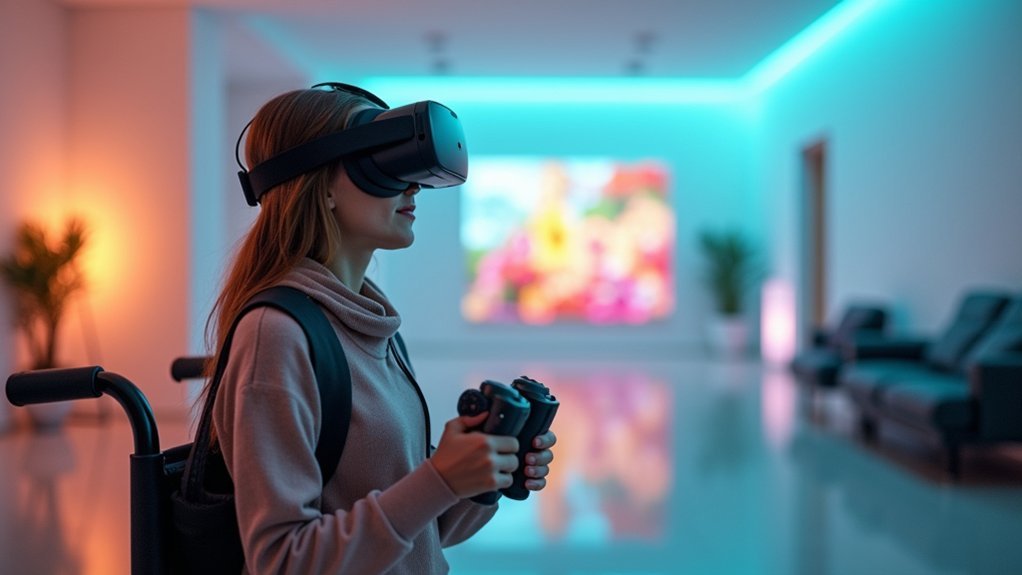
When you’re developing accessible VR experiences, you’ll need to focus on three core design principles that directly impact usability for low vision users.
Your interface should combine multiple sensory inputs, offer extensive visual customization options, and include thorough navigation support systems.
These aren’t optional add-ons—they’re fundamental requirements that’ll determine whether your VR application truly serves the visually impaired community.
Multi-Modal Interface Design
Since VR environments rely heavily on visual cues, you’ll need to create interfaces that engage multiple senses simultaneously to serve low vision users effectively.
Multi-modal feedback transforms VR accessibility by combining visual, auditory, and tactile elements to create thorough user experiences.
Your interface design should incorporate these essential elements:
- 3D Audio Integration – Implement spatial audio cues that help users navigate environments and locate interactive elements through sound positioning.
- Haptic Feedback Systems – Add tactile sensations through controller vibrations or haptic gloves to provide physical confirmation of interactions and spatial boundaries.
- Voice Navigation – Include menu narration and voice commands to reduce dependency on visual elements alone.
- High Contrast Visual Options – Offer customizable color schemes and contrast modes following universal design principles to maximize visual accessibility for varying vision capabilities.
Customizable Visual Controls
Although visual impairments vary dramatically among users, customizable visual controls serve as the foundation for truly accessible VR experiences. You’ll need extensive menu options since research shows 100% of low vision participants struggle with font enlargement in VR environments.
| Control Type | Options Available |
|---|---|
| Font Settings | Type, size adjustment |
| Display Modes | Light/dark themes |
| Visual Enhancement | Brightness, contrast levels |
| Navigation Tools | Magnification, voice commands |
Your accessible VR system should offer both light and dark modes, as preferences split evenly among low vision users. You’ll want to implement magnification features and voice command functionalities, considering 90% of participants believe VR benefits people with low vision. These customizable visual controls guarantee equitable use while providing the flexibility necessary for diverse visual needs.
Navigation Assistance Features
Beyond visual customization, you’ll need robust navigation assistance features that guide users through virtual environments safely and intuitively.
Your navigation system should integrate multiple sensory channels to compensate for visual limitations.
Essential navigation assistance features include:
- 3D spatial audio cues – Implement directional sound markers that indicate pathways, obstacles, and points of interest throughout your VR environment.
- Haptic feedback integration – Use controller vibrations to signal proximity to objects, walls, and navigation boundaries within your VR technology.
- Voice command functionality – Enable hands-free navigation through spoken instructions, allowing users to move through menus and environments without visual dependence.
- Multi-modal interaction design – Combine audio, haptic, and voice elements similar to augmented reality approaches, creating thorough navigation support that enhances spatial awareness and independent exploration.
Haptic and Audio Navigation Solutions
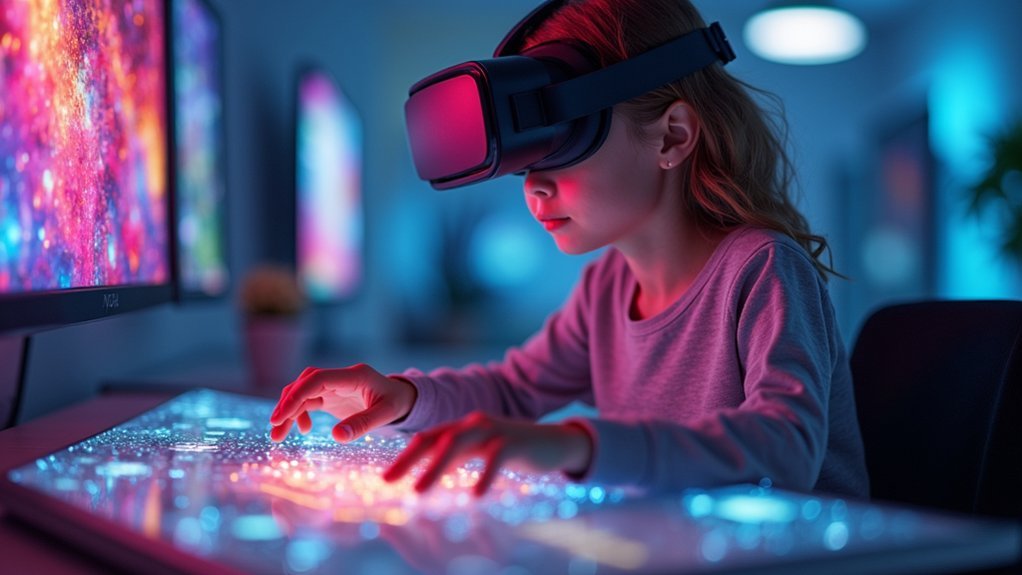
When you navigate virtual environments with limited vision, haptic feedback and audio technologies work together to create intuitive wayfinding systems that translate spatial information into tactile and auditory cues.
Discreet vibration belts deliver precise tactile signals based on your proximity to obstacles, while audio navigation systems use frequency-increasing beeps as you approach barriers.
Research involving 72 participants wearing VR headsets that simulated advanced glaucoma symptoms proved vibrotactile cues greatly improve navigation for visually impaired users.
You’ll benefit from integrated solutions like mobile apps that read signage and combine with haptic systems.
This multi-sensory approach transforms challenging virtual spaces into accessible environments where you can navigate independently and confidently through touch and sound.
Customization Options for Visual Accessibility
While haptic and audio solutions provide the foundation for accessible VR navigation, you’ll need extensive visual customization options to fully adapt virtual environments to your specific needs.
Current VR systems often fail to provide essential features for visual accessibility, despite overwhelming evidence of their necessity.
Key customization options you should expect include:
- Adjustable text settings – Font size enlargement capabilities, as 100% of study participants reported difficulties with standard text sizes.
- Flexible color schemes – Choice between dark and light backgrounds, since preferences split evenly at 50%.
- Dark mode functionality – Essential for reducing eye fatigue in bright VR environments.
- Voice command integration – Hands-free control for magnification and contrast adjustments.
These features guarantee you can personalize your VR experience according to your specific visual requirements.
Community-Driven Research and Future Innovations
As accessible VR technology continues advancing, you’ll find that community-driven research partnerships are becoming the cornerstone of meaningful innovation. Organizations like XR Access foster community engagement by connecting individuals with disabilities and developers to identify barriers and create effective solutions.
| Research Focus | Current Findings | Future Applications |
|---|---|---|
| Font Customization | 100% of participants need adjustable text settings | Enhanced reading interfaces |
| Multi-modal Feedback | Haptic and audio cue integration | Improved navigation systems |
| User Adoption | 90% believe VR offers significant benefits | Educational and social platforms |
| Universal Design | Customizable setups show promise | Broader assistive technology integration |
You’ll benefit from ongoing innovations emphasizing universally designed principles. These developments prioritize customizable setups and perceptible information, ensuring VR accommodates your specific needs while enhancing experiences across education and social interaction applications.
Frequently Asked Questions
Does VR Work With Poor Eyesight?
You’ll find VR challenging with poor eyesight due to interface limitations, but customizable features like adjustable fonts, brightness, and haptic feedback can greatly improve your experience and visibility.
Can Visually Impaired People Use VR?
You can use VR with visual impairments, though most current experiences lack proper accessibility features. You’ll need haptic feedback, audio cues, and screen readers to navigate effectively in virtual environments.
What Is the Best VR Headset for Low Vision?
You’ll find the HP Reverb G2 offers the highest resolution for clearer visuals, while the Meta Quest 2 provides excellent adjustable display settings. Both support accessibility modifications that’ll enhance your low vision VR experience considerably.
What Type of Adaptive Devices Are Available for Low Vision?
You can use electronic magnifiers with adjustable contrast, smart glasses for real-time processing, haptic feedback belts for navigation cues, augmented reality apps, and screen readers with voice commands for digital access.

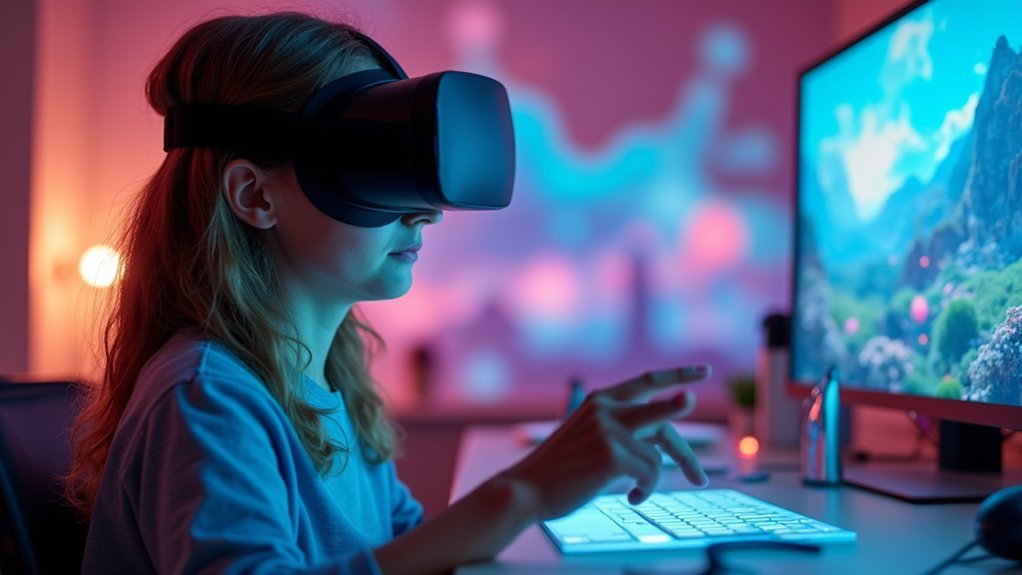

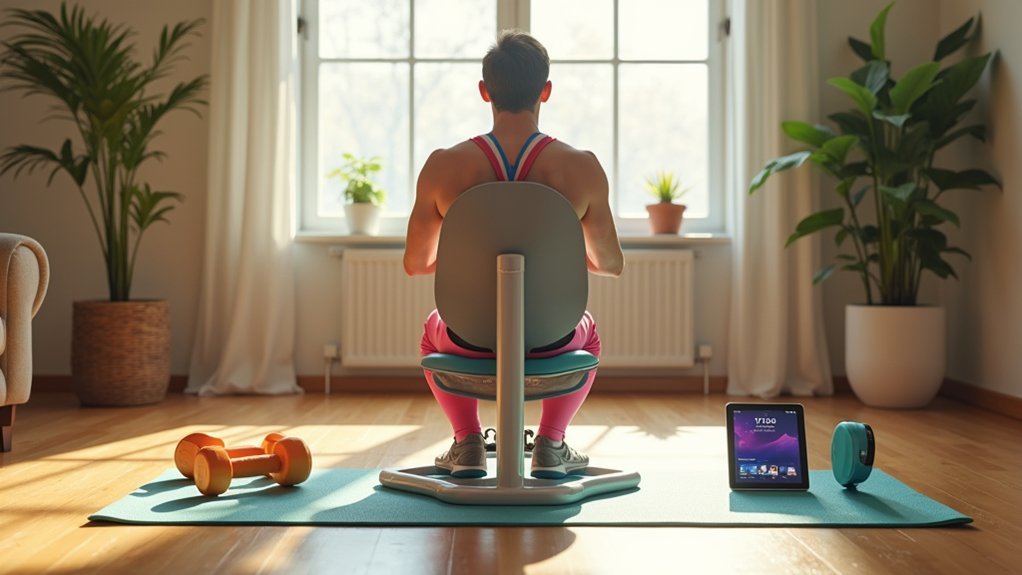

Leave a Reply